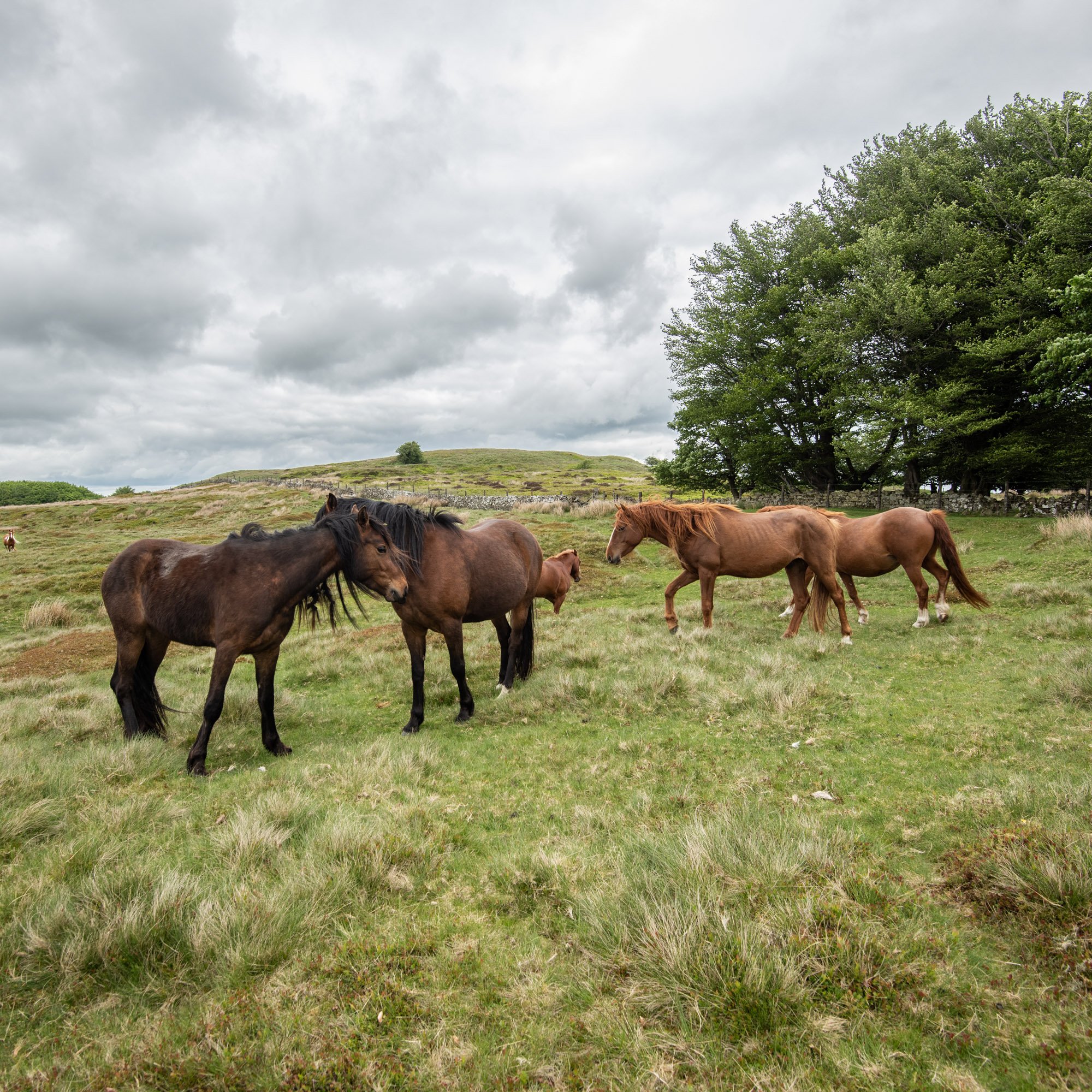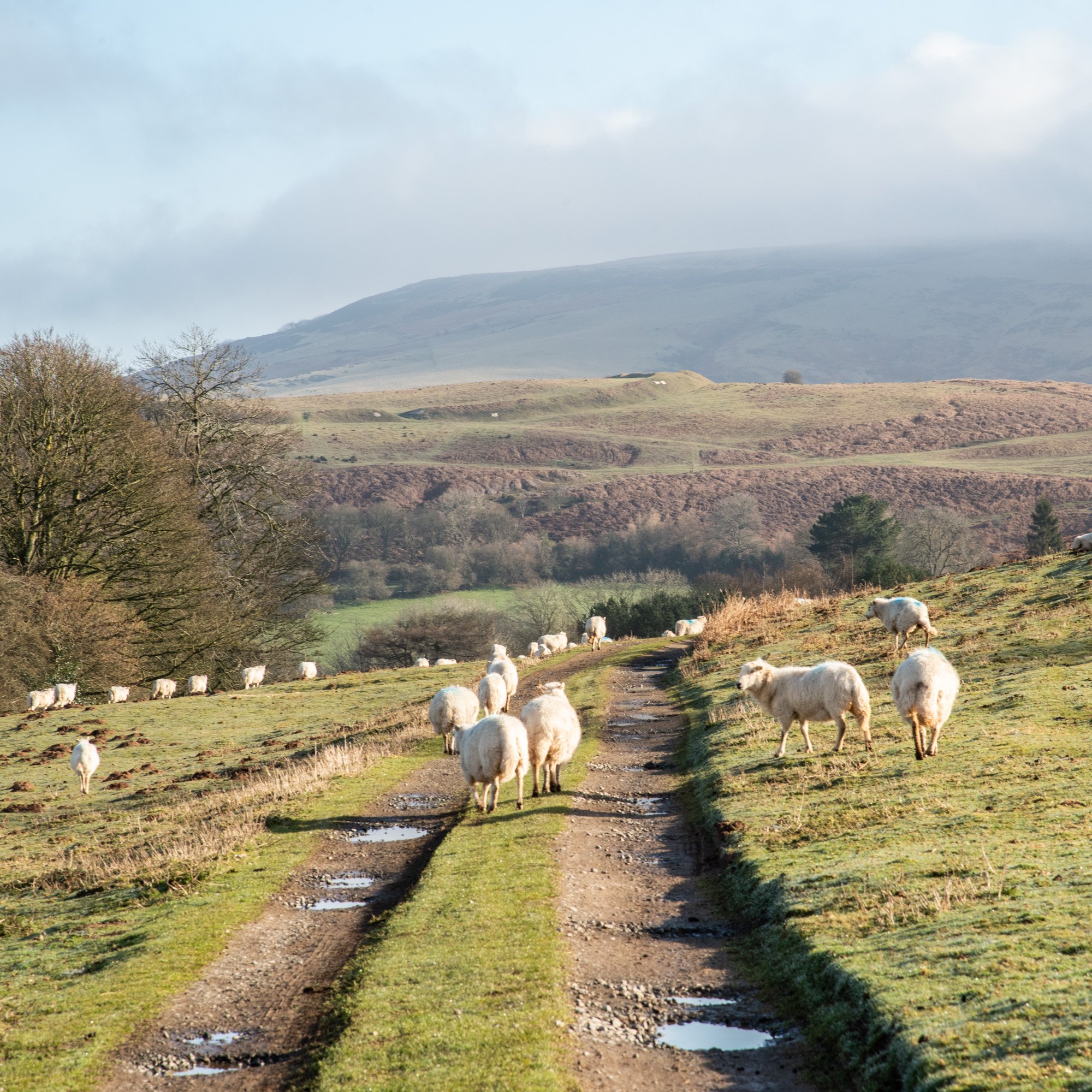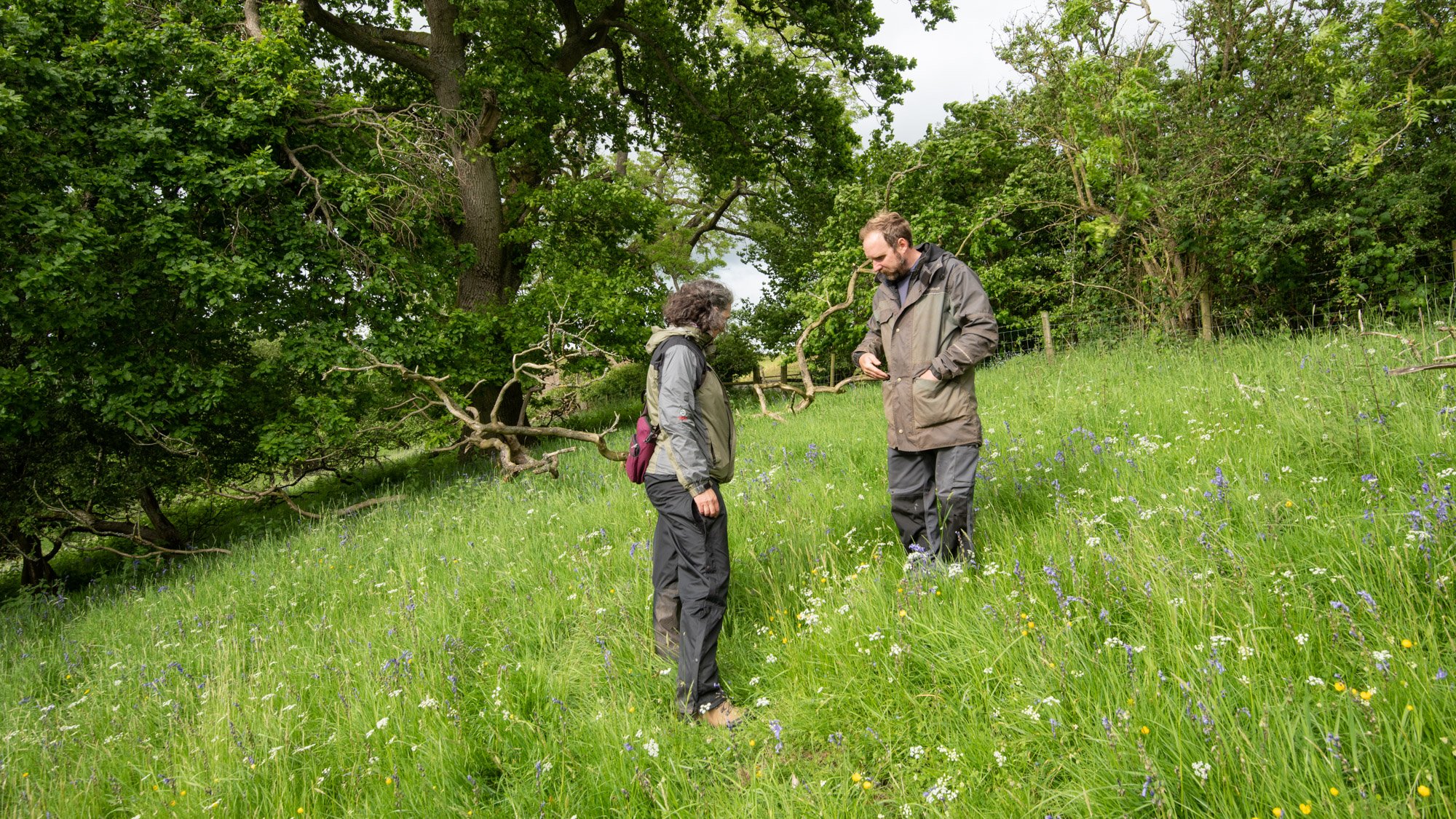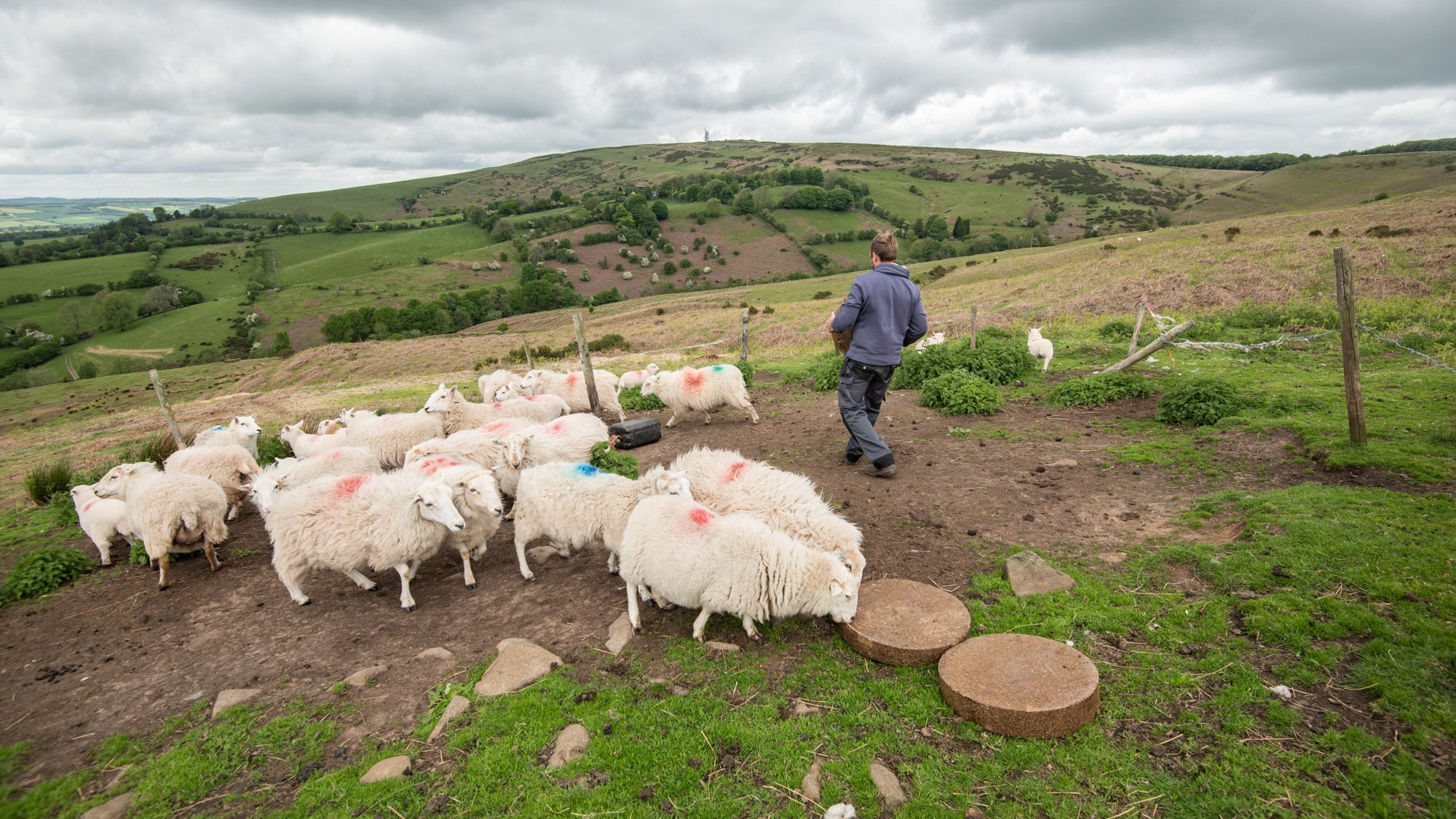John Heighway : Commoner, Shropshire Hills
John Heighway
‘The common is the lifeline of the farm - having the grazing rights is everything. It's hard to explain how beneficial the common is, and the feeling of freedom up there. If you stand on the Nordy Ring, or out on the top, and you look down over the forests and the hedgerows, you see it as part of this wide countryside, it keeps it all alive.’
“I just love to see the birds up there. You’ve got the skylarks, that hover, and snipes, that come up from your feet - and then there’s all the mosses and flowers. It’s really nice to see, and it makes you feel as though you’re doing the job properly. The sheep are helping to maintain the open space, whilst producing food sustainably.”
‘I've been on the farm all my life,’ says John. ‘My family have farmed here for a very long time. It could be seven generations, or more.’ John’s wife Megan is also from a farming family and although when she was growing up she said she’d never marry a farmer, it hasn’t worked out like that! The Heighways carry on the tradition and now have three sons.
John keeps a hill flock of Welsh Ewes, Cluns and Cheviot sheep, and uses grazing land around the farm, as well as Clee Liberty Common. He also keeps a small number of cows, which he puts to a Charolais bull. He loves what he does. ‘At the moment, I'm getting up at 11 o'clock at night, and then three o'clock in the morning, and then five, because we're lambing. But, I love it. And on a day like today, you look at that, and you listen to the birds singing, and see that view. And we are making a difference - we are feeding people, which, you know, you feel quite proud about.’
Clee Liberty Common offers fabulous walking routes with stunning views. Yet like many commons, it has an issue with the spread of bracken. In summer the bracken can be 6-7 foot high in places, encroaching on grazing land, blocking access for walkers and forming obstacles for sheep when they’re brought in from the common. John and his father Doug have for many years tried to reduce the bracken. ‘We have been crushing - the parish council bought a crusher that will do 15 foot at a time, and that happens every year. And a robo cutter can get through it, cut paths out so we can see where we’re going, and we've dropped the topper in, which breaks it up. This year we've had some funding from the Common Uplands project, so we're going to do that again in those same areas with the topper, and in one big flat area we can use the crusher and the robo cutter together. The graziers do not want to clear kill every single piece of bracken or gorse, as you've got to have biodiversity, but you do have to have to have animal welfare at the forefront of your mind.’
Aspects of management of the common have to be discussed among many people. John is one of only two active graziers, but there are more than fifty other people who have rights to graze, and although they do not exercise them, they are part of the commoners association. Clee St Margaret Parish Council, who own the common, are also involved in decision making. ‘We've always had quite a good working relationship with the Parish Council, and that’s the way it should be.’
For John, his connection with the common is through his ancestry and his daily job of farming. ‘The common is the lifeline of the farm - having the grazing rights is everything. It's hard to explain how beneficial the common is, and the feeling of freedom up there. If you stand on the Nordy Ring, or out on the top, and you look down over the forests and the hedgerows, you see it as part of this wide countryside, it keeps it all alive. And I'm no expert but I just love to see the birds up there. You've got the skylarks, that hover, and snipes, that come up from your feet - and then there’s all the mosses and flowers. It’s really nice to see, and it makes you feel as though you're doing the job properly. The sheep are helping to maintain the open space, whilst producing food sustainably.’
Find out more about the work that’s being done to learn more about the Nordy Ring HERE.








